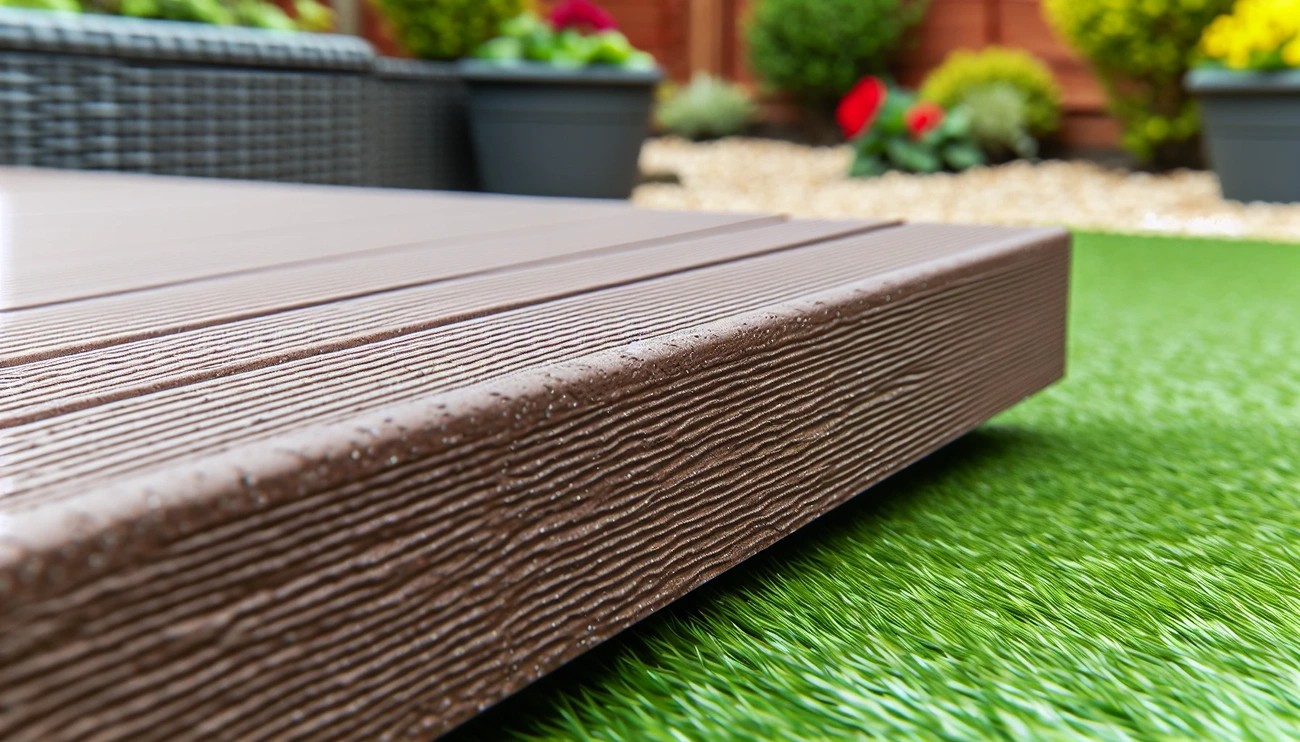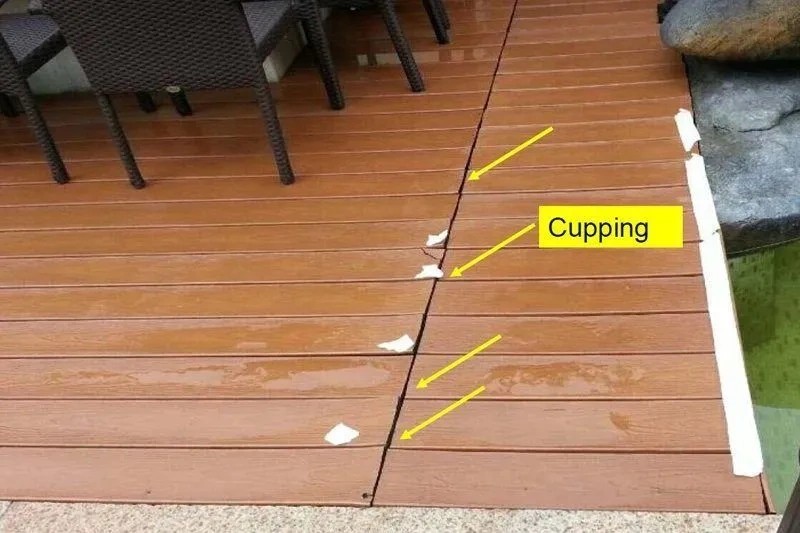Why WPC Decking Outlasts Traditional Wood: Expert Analysis
May 23,2025

WPC decking lasts decades longer than traditional wood and comes with a 25-year residential warranty that regular timber can't match. The impressive performance makes sense when you look at what goes into this innovative material. A mix of 70% wood and additives combined with 30% recycled plastic creates decking that's remarkably durable and supports green practices.
WPC decking blends the natural look of wood with plastic's resilience to create something special. The material absorbs substantially less water than conventional timber, which makes it more resistant to moisture damage. NeoTimber's second generation WPC decking takes things further with a tough polymer shell that protects against environmental elements from all angles. This advanced design is a great way to get ultra-low maintenance benefits, and you won't need the constant upkeep that traditional wood requires.
What is WPC Decking and How is it Made?
WPC decking's composition shows why it's better than traditional wood. WPC (Wood-Plastic Composite) decking is made from a precise blend of wood fibers and thermoplastic polymers. Most manufacturers mix 60% recycled hardwood fibers with 40% recycled plastic. Some formulations use up to 70% wood and additives combined with 30% recycled plastic.
The manufacturing of WPC decking happens in two main steps. Wood particles (20 to 60 mesh in size) are really mixed with thermoplastics like high-density polyethylene (HDPE), low-density polyethylene (LDPE), or polyvinyl chloride (PVC). This creates a dough-like mixture called compounding. PE-based WPCs lead the market and make up about 80% of all wood-plastic composites.
Several important additives improve both performance and looks:
- Coupling agents create better bonds between hydrophilic wood and hydrophobic plastic for improved stability
- Lubricants make the surface look better and speed up production
- UV stabilizers guard against sun damage and color fading
- Biocides (like zinc borate) protect against fungi and insects
- Colorants give it a wood-like look and weather resistance
The final product takes shape through extrusion as the second step. The compounded mixture heats up, melts, and moves through a die to create continuous profiles in desired shapes. Some manufacturers add a protective polymer shell through co-extrusion. This shell caps the composite core and creates a non-porous shield against environmental elements.
The material processes at temperatures about 28°C lower than unfilled plastics. This makes production more energy-efficient. Wood fibers and plastic resins interact to create a single-phase composite that's more stable than solid wood. So this unique mix makes WPC decking really resistant to water absorption, which helps it last longer outdoors.
Comparing WPC Decking to Traditional Wood

The performance gap between WPC decking and traditional wood becomes clear right away in several key areas.
WPC decking and wood have a huge difference in durability. Traditional wood decking lasts 10-15 years with proper care. WPC decking's lifespan is 25-30 years or longer. Premium WPC products come with warranties from 25 years to 50 years. This is a big deal as it means that WPC lasts much longer than wood's typical 15-year lifespan.
The maintenance needs show the biggest contrast between these materials. Wood deck owners must sand, stain, and seal their decks every year. They spend entire weekends on upkeep. WPC deck owners clean their decks for less than an hour yearly. These differences show up in costs too. Wood deck's yearly maintenance runs up to USD 400.00. WPC decks need just USD 10.00 per year.
WPC decking has another advantage with moisture resistance. Wood naturally soaks up water and this leads to swelling, warping, and rot. WPC's composition blocks moisture and prevents these common issues.
Environmental challenges affect these materials differently. Wood fades by a lot within a year or two. WPC keeps its color longer, though some initial weathering occurs. Most WPC products fade only 10-15%. Darker colors show more changes than lighter ones.
WPC handles common wood issues better. It resists splintering, cracking, and insect damage. UV protection in WPC works better than traditional wood. Co-extruded versions with protective outer layers perform even better.
WPC costs more upfront than traditional wood. Notwithstanding that, WPC proves cheaper over decades because it needs minimal maintenance and lasts longer.
Generational Improvements in WPC Decking

WPC decking technology's progress has been remarkable since the 1990s. The original composite products were state-of-the-art at the time but faced major challenges. Color fading, mold susceptibility, and structural limitations were common problems. These products contained high amounts of wood filler, sometimes reaching 60%. This made them prone to moisture damage and weathering effects.
A breakthrough came around 2009 with second-generation co-extruded WPC decking. This state-of-the-art technology uses multiple extruders that work together to combine different materials in one mold. The result creates a dual-layer construction with a composite core that provides strength and a protective surface layer.
The protective cap layer stands out as the most important advancement in WPC decking technology. This layer works as a 360° shield that protects the core from water, UV radiation, fungus, and scratches. Manufacturers report that this innovation has extended product life from 15 years in first-generation products to 20-25 years in current models.
Modern WPC systems now include composite joists, recycled plastic subframes, and adjustable pedestal supports. These improvements go beyond just the boards themselves. They solve a vital weakness of early installations where wooden support structures would deteriorate under rot-resistant composite decking.
Premium manufacturers have also transformed material composition. They now use specialized components like Iniwood material and surlyn resin cap - the same material found in golf balls - to maximize protection. These advanced formulas resist warping, rotting, splintering, and color fading much better than before.
Environmental sustainability remains a top priority through these generational improvements. Today's WPC decking contains high levels of recycled content: 35% plastic resin, 55% oak wood fiber, and 10% additives. This composition helps boost performance while supporting ecological responsibility.
Conclusion
WPC decking represents a groundbreaking rise in outdoor construction materials and gives homeowners a compelling alternative to traditional timber. Its unique blend of wood fibers and recycled plastic creates a product that substantially outlasts conventional wooden decking. WPC decking lasts 25-30 years, while wood typically only survives 10-15 years, which shows its superior long-term value.
WPC decking's low maintenance needs save homeowners time and money over its lifetime. Traditional wood requires annual treatments that cost up to $400, but WPC owners spend just $10 yearly on simple cleaning. These savings add up dramatically over decades of ownership.
The progress from original composites to today's co-extruded products with protective polymer shells has fixed many early problems. Modern WPC decking now resists moisture damage, color fading, and structural weaknesses that affected both wood and early composite versions. Better supporting parts like composite joists and recycled plastic subframes create complete systems built to last.
Yes, it is true that WPC decking costs more upfront than wood, but its longer life and minimal upkeep make it more budget-friendly in the long run. Using recycled materials also makes it appealing to environmentally conscious homeowners.
WPC decking shows how innovative materials can solve traditional problems effectively. This mix of natural looks and engineered toughness transforms outdoor spaces by providing solutions that handle weather extremes while looking great year after year.
Related Posts
Are you looking for a reliable environmentally friendly composite flooring manufacturer?
We can quickly provide customers with market analysis, technical support and customized services.






